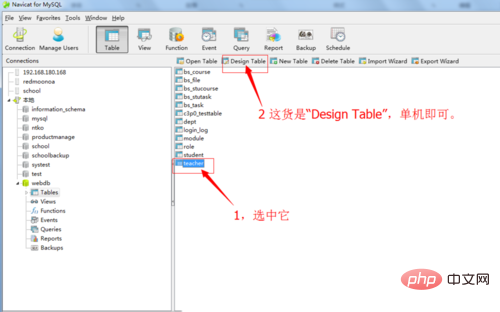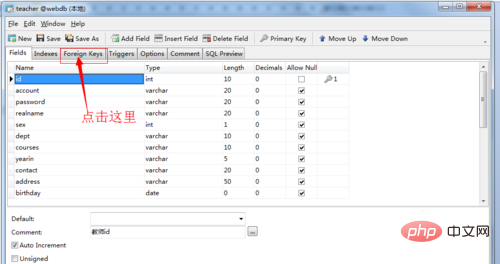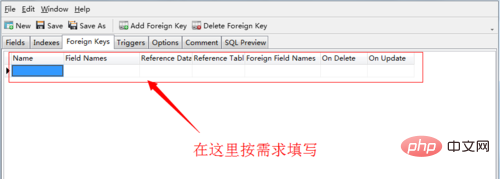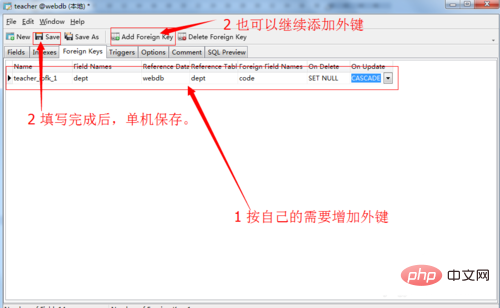
Let me first introduce the basic situation. Now there are two tables, one is the teacher table and the other is the dept table. Now I want to set the dept attribute in the teacher table as a foreign key and associate the code attribute in the dept table. The specific situation is as shown in the figure; OK, now that the basic situation is introduced, let’s start teaching you how to set foreign keys in navicat for mysql.
Recommended tutorial: MySQL database introductory video tutorial
##1. Open my navicat, and then find my teacher table, select it and click 'design table' on the menu bar.



Extended content
Navicat is a fast, reliable and affordable database Management tools designed to simplify database management and reduce system management costs. It is designed to meet the needs of database administrators, developers and small and medium-sized enterprises. Navicat is built with an intuitive graphical user interface that allows you to create, organize, access and share information in a secure and easy way.
Navicat is world-famous and widely trusted by major enterprises, government agencies, and educational institutions around the world. It is also an essential daily working partner for practitioners from all walks of life. Since 2001, Navicat has been downloaded over 2,000,000 times worldwide and has a customer base of over 70,000 users. More than 100 Fortune 500 companies are using Navicat. Navicat provides up to 7 languages for customers to choose from and is recognized as the most popular database front-end user interface tool in the world. It can be used to manage and develop local or remote MySQL, SQL Server, SQLite, Oracle and PostgreSQL databases. Navicat is powerful enough to meet all the needs of professional developers, and is easy to learn for those new to database servers. With an extremely complete graphical user interface (GUI), Navicat lets you create, organize, access and share information in a secure and simple way. Navicat is available on three platforms - Microsoft Windows, Mac OS X and Linux. It allows users to connect to any local or remote server, and provides some practical database tools such as data model, data transfer, data synchronization, structure synchronization, import, export, backup, restore, report creation tools and plans to assist in managing data.The above is the detailed content of How to set foreign keys in Navicat. For more information, please follow other related articles on the PHP Chinese website!
 Commonly used mysql management tools
Commonly used mysql management tools
 The specific process of connecting to wifi in win7 system
The specific process of connecting to wifi in win7 system
 What is highlighting in jquery
What is highlighting in jquery
 The role of the formatfactory tool
The role of the formatfactory tool
 What programming language is c language?
What programming language is c language?
 Taobao password-free payment
Taobao password-free payment
 Usage of Type keyword in Go
Usage of Type keyword in Go
 There are several types of browser kernels
There are several types of browser kernels